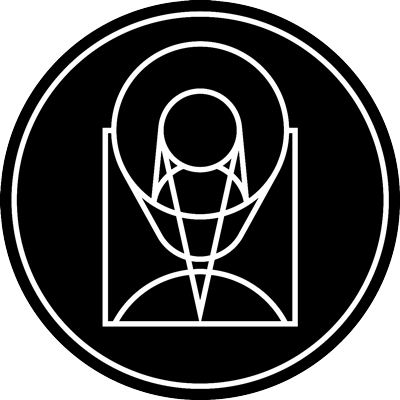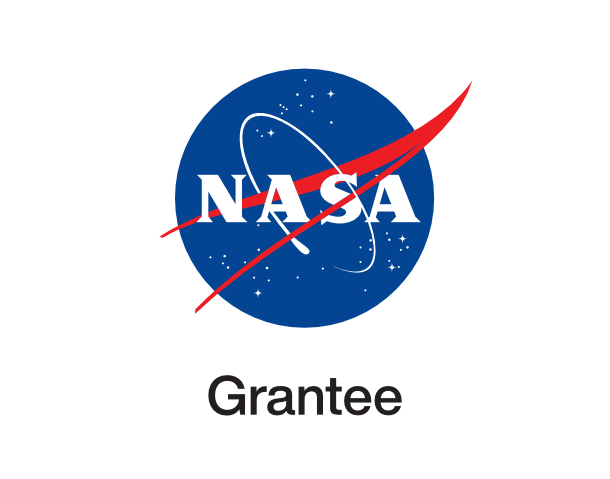Hubble Sees 'Comet Galaxy' Being Ripped Apart By Galaxy Cluster

stsci_2007-12a March 2nd, 2007
Credit: NASA, ESA, and J. -P. Kneib (Laboratorie d'Astrophysique de Marseille)
NASA's Hubble Space Telescope, in collaboration with several other ground- and space- based telescopes, has captured a galaxy being ripped apart by a galaxy cluster's gravitational field and harsh environment. The finding sheds light on the mysterious process by which gas-rich spiral-shaped galaxies might evolve into gas-poor irregular- or elliptical-shaped galaxies over billions of years. The new observations also reveal one mechanism for forming the millions of "homeless" stars seen scattered throughout galaxy clusters. There are many galaxies of different shapes and sizes around us today. Roughly half are gas-poor elliptical-shaped galaxies with little new star formation activity, and half are gas- rich spiral and irregular galaxies with high star formation activity. Observations have shown that gas-poor galaxies are most often found near the centers of crowded galaxy clusters, whereas spirals spend most of their lifetimes in less crowded circumstances. But deep observations of the universe show that when the universe was half its present age, only one in five galaxies was a gas-poor object. So where do all of today's gas-poor galaxies come from? Scientists suspect that some kind of transformative process must have taken place, but because galaxy evolution occurs over billions of years, they previously have not been able to see this transformation at work. The new Hubble observations, made by an international team of astronomers led by Luca Cortese of Cardiff University, United Kingdom, provide one of the best examples to date of this metamorphosis. While looking at galaxy cluster Abell 2667, astronomers found an odd- looking spiral galaxy (shown in the upper left hand corner of the image) that plows through the cluster after being accelerated to at least 3.5 million km/h by the enormous combined gravity of the cluster's dark matter, hot gas and hundreds of galaxies. As it speeds through, it rams into the hot gas that permeates the cluster. Its gas and stars are pulled away by the gravitational tidal forces exerted by the cluster, just as the forces exerted by our moon and sun pull the Earth's oceans. The unique galaxy is situated 3.2 billion light-years from the Earth. It has an extended stream of bright blue knots and diffuse wisps of young stars whose formation and evolution have been driven by both the cluster's tidal forces and a mechanism called "ram pressure stripping." Abell 2667's hot gas is composed of charged particles with a temperature of 10-100 million degrees. During the ram pressure stripping process, the charged particles strip and push away the infalling galaxy's gas, just as the solar wind of charged particles pushes ionized gas away from a comet to create a gas tail. For this reason the scientists have nicknamed the stretched spiral the "comet galaxy." In the midst of the destruction a baby-boom of star formation in the center of the infalling galaxy has been triggered by the tidal effect of the cluster's gravity. Millions of stars have been ripped from their host galaxy. The spiral galaxy will inevitably lose all its gas and dust in the collision, and become a gas-poor galaxy with an old population of red stars. Scientists estimate that the total duration of the transformation process is close to one billion years. What is seen now in the Hubble image is not yet half-way through the transformation (i.e. roughly 200 million years). The strong gravitational pull exerted by the galaxy cluster's collective mass has bent the light of other, more distant galaxies and distorted their shapes - an effect called gravitational lensing. The giant bright banana-shaped arc seen just to the right of the center in the photo corresponds to the magnified and distorted image of a distant galaxy that lies behind the cluster's core. The Hubble image was taken by the Wide Field Planetary Camera 2 in October 2001 and is a composite of three observations through blue, green, and near-infrared filters. The astronomers combined the Hubble observations with various ground- and space-based telescopes: the European Southern Observatory's Very Large Telescope in Chile, NASA's Spitzer Space Telescope, NASA's Chandra X-Ray Observatory, and the twin Keck Telescopes in Hawaii. The Very Large Telescope was used for optical spectroscopy and near-infrared photometry. Spitzer Space Telescope provided mid-infrared photometry. The Chandra X-Ray Observatory took X-ray observations, and the twin Keck Telescopes were used for optical spectroscopy. Optical spectroscopy is used to measure the temperature, composition, and radial motion of stars and galaxies. Infrared photometry measures the brightness, and any change in brightness, of an object glowing at infrared wavelengths. These results were published in the Monthly Notices of the Royal Astronomical Society by L. Cortese (Cardiff University), D. Marcillac (Steward Observatory), J. Richard (California Institute of Technology), H. Bravo-Alfaro (Universidad de Guanajuato), J.-P. Kneib (Laboratoire d'Astrophysique de Marseille), G. Rieke (Steward Observatory), G. Covone (Osservatorio de Capodimonte), E. Egami (Steward Observatory), J. Rigby (Observatories of the Carnegie Institution of Washington), O. Czoske (Bonn University), and J. Davies (Cardiff University).
Provider: Space Telescope Science Institute
Image Source: https://hubblesite.org/contents/news-releases/2007/news-2007-12
Curator: STScI, Baltimore, MD, USA
Image Use Policy: http://hubblesite.org/copyright/

- ID
- 2007-12a
- Subject Category
- C.5.5.3 C.6.2.1
- Subject Name
- Abell 2667
- Credits
- NASA, ESA, and J. -P. Kneib (Laboratorie d'Astrophysique de Marseille)
- Release Date
- 2007-03-02T00:00:00
- Lightyears
- 3,200,000,000
- Redshift
- 3,200,000,000
- Reference Url
- https://hubblesite.org/contents/news-releases/2007/news-2007-12
- Type
- Observation
- Image Quality
- Good
- Distance Notes
- Distance in lightyears
- Facility
- Hubble, Hubble, Hubble
- Instrument
- WFPC2, WFPC2, WFPC2
- Color Assignment
- Blue, Green, Red
- Band
- Optical, Optical, Optical
- Bandpass
- B, V, I
- Central Wavelength
- 450, 606, 814
- Start Time
- Integration Time
- Dataset ID
- Notes
- Coordinate Frame
- ICRS
- Equinox
- 2000
- Reference Value
- 357.91934312361, -26.07370183722
- Reference Dimension
- 3268.00, 1662.00
- Reference Pixel
- 1776.00938911424, 1356.96690884284
- Scale
- -0.00001264931, 0.00001264931
- Rotation
- 24.88831229
- Coordinate System Projection:
- TAN
- Quality
- Full
- FITS Header
- Notes
- World Coordinate System resolved using PinpointWCS 0.9.2 revision 218+ by the Chandra X-ray Center
- Creator (Curator)
- STScI
- URL
- http://hubblesite.org
- Name
- Space Telescope Science Institute Office of Public Outreach
- outreach@stsci.edu
- Telephone
- 410-338-4444
- Address
- 3700 San Martin Drive
- City
- Baltimore
- State/Province
- MD
- Postal Code
- 21218
- Country
- USA
- Rights
- http://hubblesite.org/copyright/
- Publisher
- STScI
- Publisher ID
- stsci
- Resource ID
- STSCI-H-p0712a-f-3268x1662.tif
- Resource URL
- https://mast.stsci.edu/api/latest/Download/file?uri=mast:OPO/product/STSCI-H-p0712a-f-3268x1662.tif
- Related Resources
- http://hubblesite.org/newscenter/archive/releases/2007/12
- Metadata Date
- 2022-07-06T00:00:00
- Metadata Version
- 1.2
Detailed color mapping information coming soon...















